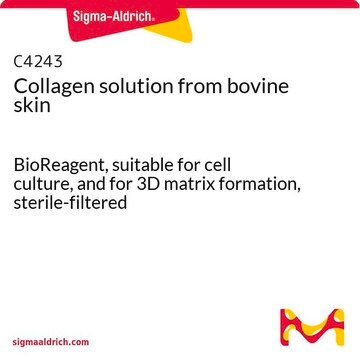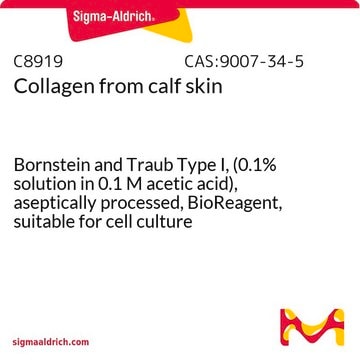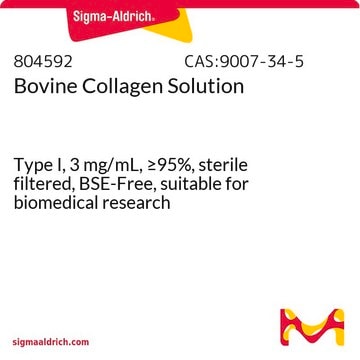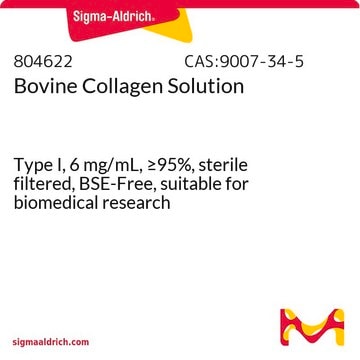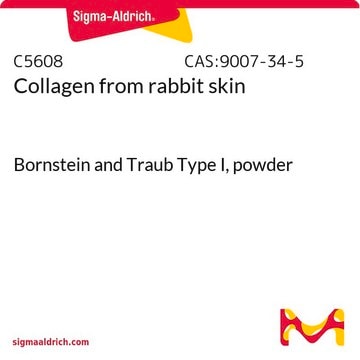C2124
Bovine Collagen Type I
from bovine skin, liquid, 6 mg/mL, suitable for cell culture, used for 3D gel formation
About This Item
Prodotti consigliati
product name
Collagen solution from bovine skin, Type I, 6 mg/mL, sterile-filtered, BioReagent, and for 3D matrix formation., suitable for cell culture
Origine biologica
bovine skin
Livello qualitativo
Sterilità
sterile-filtered
Nome Commerciale
BioReagent
Forma fisica
liquid
Confezionamento
pkg of 50 mL
Concentrazione
6 mg/mL
tecniche
cell culture | mammalian: suitable using and for 3D matrix formation.
Copertura della superficie
6‑10 μg/cm2
Specificità del legame
Peptide Source: Collagen
Peptide Source: Elastin
Peptide Source: Fibronectin
Attività estranea
endotoxin ≤1.0 μmole/min-mg protein
Condizioni di spedizione
wet ice
Temperatura di conservazione
2-8°C
Cerchi prodotti simili? Visita Guida al confronto tra prodotti
Categorie correlate
Descrizione generale
Applicazioni
Azioni biochim/fisiol
Componenti
Nota sulla preparazione
Altre note
Codice della classe di stoccaggio
10 - Combustible liquids
Classe di pericolosità dell'acqua (WGK)
nwg
Punto d’infiammabilità (°F)
Not applicable
Punto d’infiammabilità (°C)
Not applicable
Certificati d'analisi (COA)
Cerca il Certificati d'analisi (COA) digitando il numero di lotto/batch corrispondente. I numeri di lotto o di batch sono stampati sull'etichetta dei prodotti dopo la parola ‘Lotto’ o ‘Batch’.
Possiedi già questo prodotto?
I documenti relativi ai prodotti acquistati recentemente sono disponibili nell’Archivio dei documenti.
I clienti hanno visto anche
Articoli
Extracellular matrix proteins such as laminin, collagen, and fibronectin can be used as cell attachment substrates in cell culture.
Il team dei nostri ricercatori vanta grande esperienza in tutte le aree della ricerca quali Life Science, scienza dei materiali, sintesi chimica, cromatografia, discipline analitiche, ecc..
Contatta l'Assistenza Tecnica.